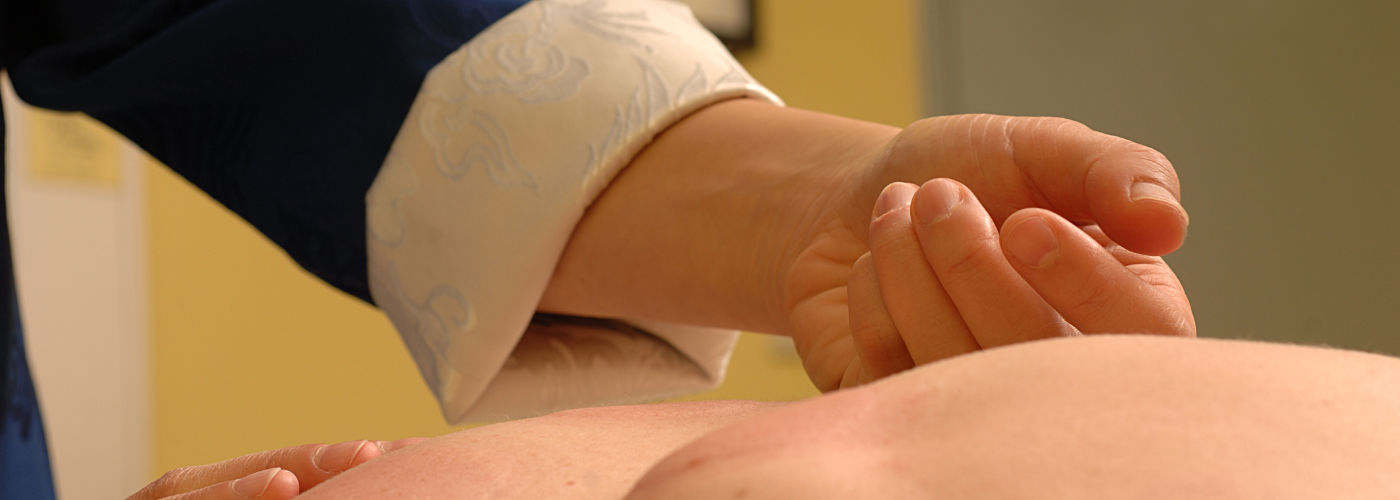Tuina (Tui-na), which dates back to 1,700 BC, is the parent of most modern Asian bodywork forms. Tuina in Chinese translates to “Push-Pull”, and is in reference to the techniques used on the body.
Tuina is best described as a cross between Shiatsu and acupressure. It’s taught as a separate but equal field of study in schools of Traditional Chinese Medicine. Tuina uses rhythmic compressions along the meridians of the body, as well as a variety of techniques to promote circulation and lubricate the joints. Tuina’s bodywork – holding, pressing and manually working on the body at acupressure points and meridians – directly affects the flow of Qi (Life-force energy and vitality).
Many of the techniques are similar to conventional Swedish-style massage – gliding (known as effleurage or Tui), kneading (petrissage or Na), percussion (tapotement or Da), friction, pulling, rotation, rocking, vibration, and shaking. Tuina has an ability to focus on specific problems, especially chronic pain associated with the muscles, joints, and skeletal system. It’s especially effective for joint pain (such as arthritis), sciatica, muscle spasms, and pain in the back, neck, and shoulders. It also helps chronic conditions such as insomnia, constipation, headaches (including migraines), and tension associated with stress.
Tuina does not simply work on the muscles, bones, and joints. It works with the energy of the body at a deeper level. As the practitioner senses the body with their hands, they are able to assess the distribution of energy and affect its flow. Tuina is a great therapeutic extension of Chinese Medicine, with an emphasis on restoring and balancing energy.

